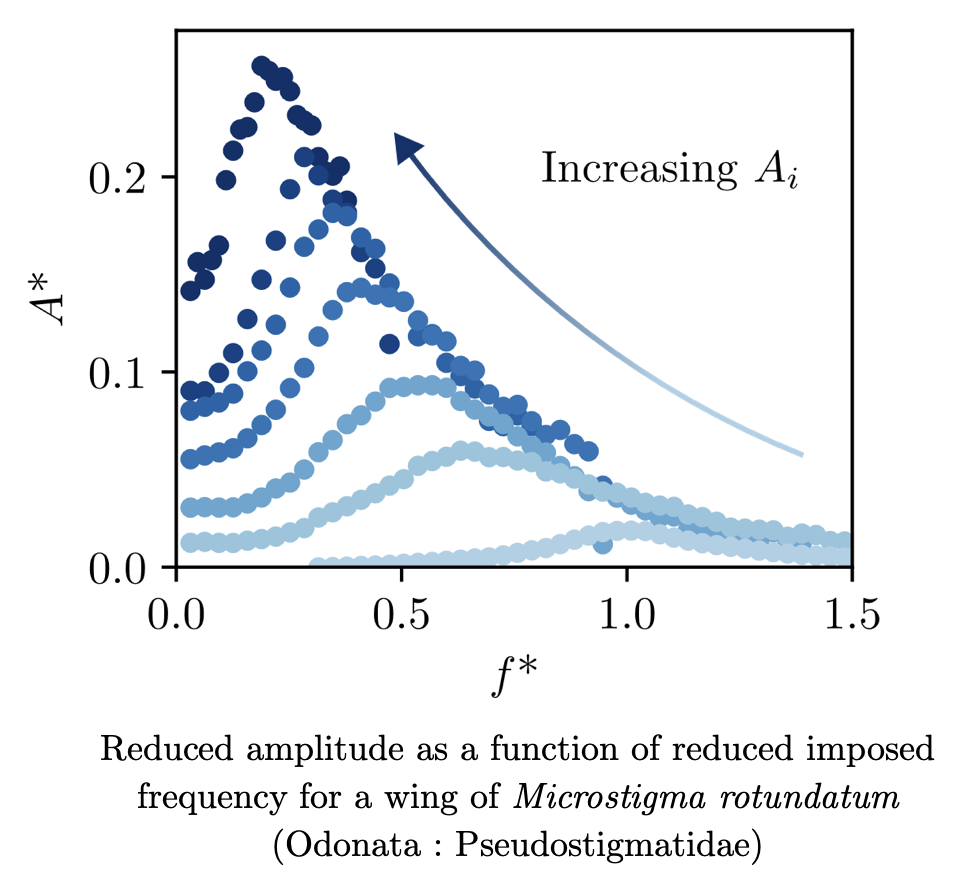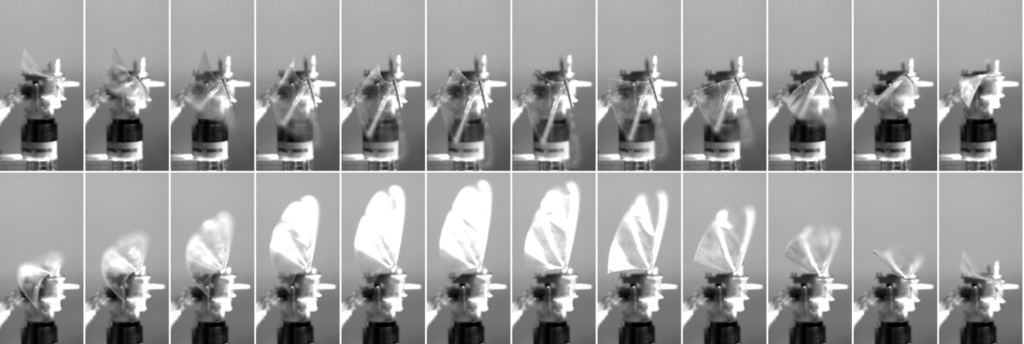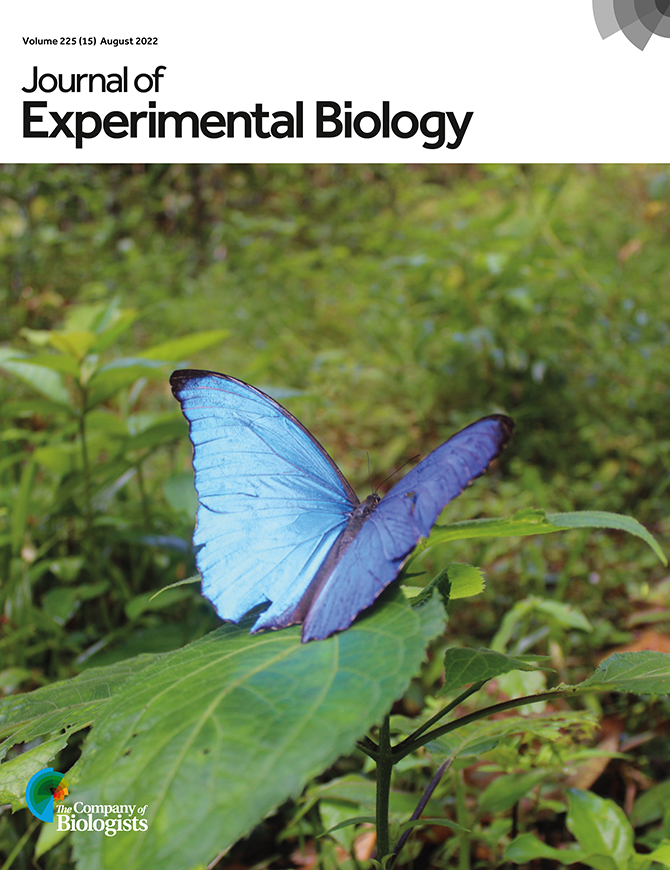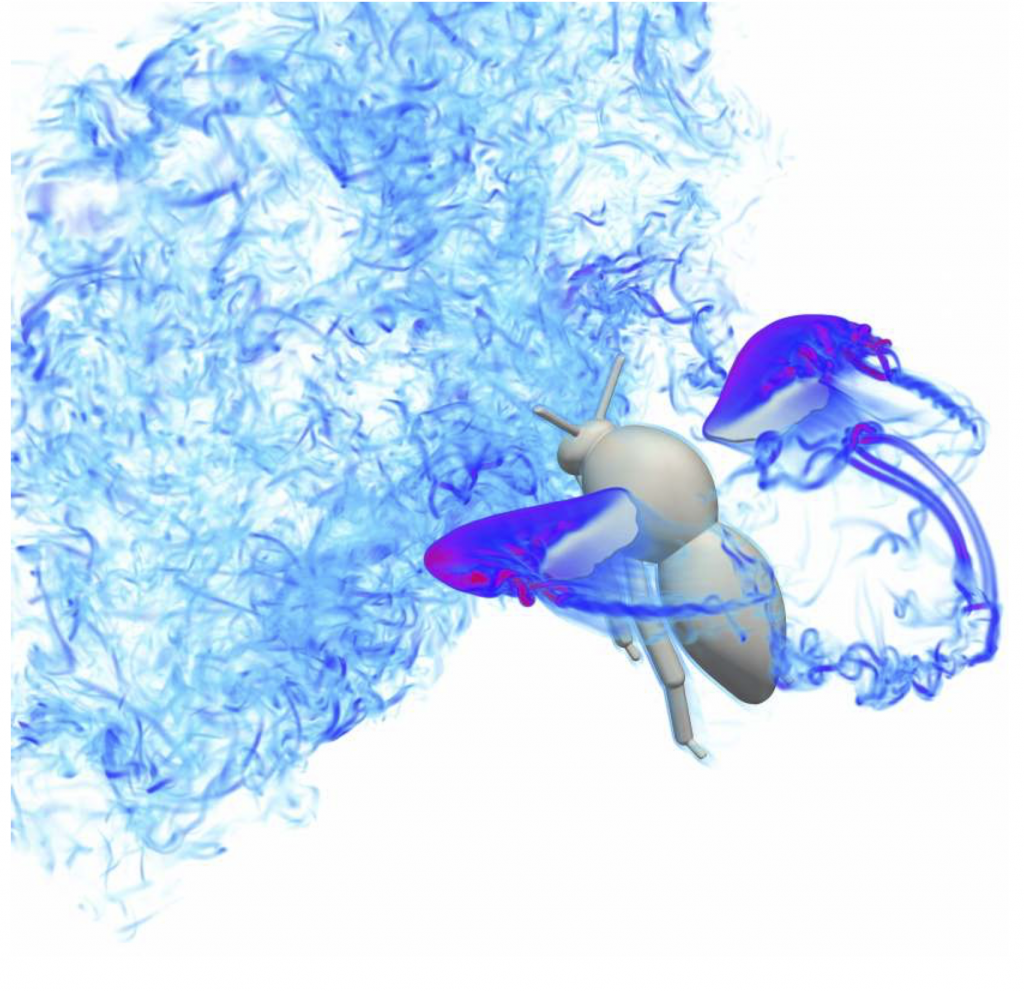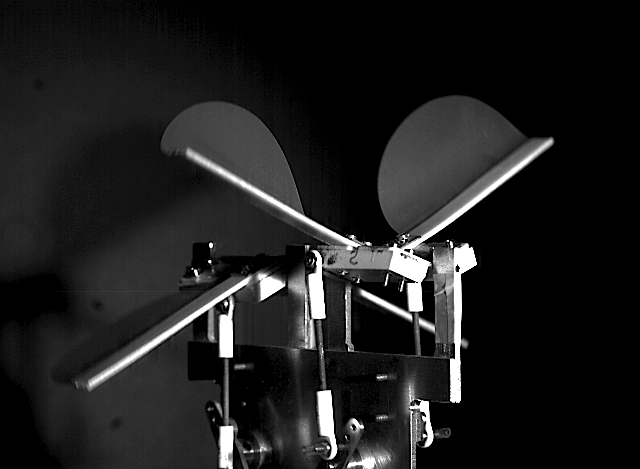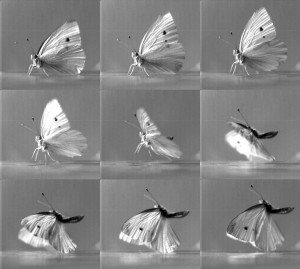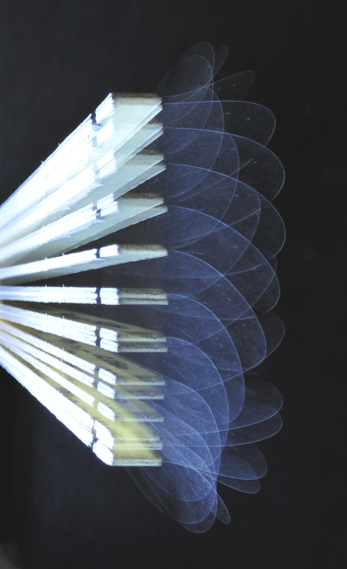C. Aracheloff, R. Garrouste, A. Nel, R. Godoy-Diana, B. Thiria
Journal of the Royal Society Interface 21, 20240401 (2024).
doi: 10.1098/rsif.2024.0401
We investigated the connection between the flight flapping frequency and the intrinsic wing properties in Odonata (dragonflies and damselflies). For such large flying insect species, it has been noted that the wingbeat frequency is significantly lower than the structural resonance of the wing itself. However, the structural resonance mechanism is often evoked in the literature for flying and swimming animals as a means to increase locomotion performance. Here, we show that the flight of Odonata is based on a nonlinear mechanism that strongly depends on the wingbeat amplitude. For large flapping amplitudes (as observed in natural flight), the resonant frequency of the wings decreases with respect to its value at low amplitudes to eventually match the wingbeat frequency used in flight. By means of this nonlinear resonance, Odonata keep a strong wing stiffness while benefiting from a passive energy-saving mechanism based on the dynamic softening of the wing.
